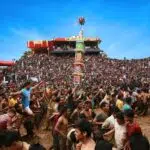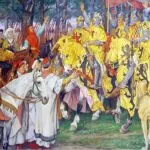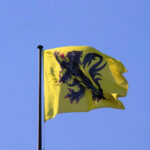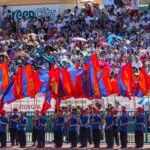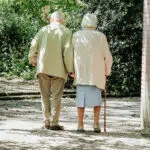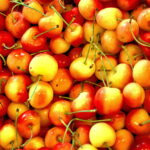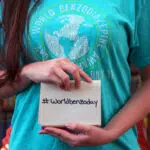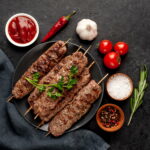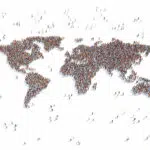Every year, the Naadam Holiday is celebrated in Mongolia from July 11 to July 15. Mongolians passionately commemorate their nomadic lifestyle and heritage over the course of five days. The event begins on Revolution Day, Mongolia’s National Day, which commemorates the country’s independence from China on July 11, 1921. The Naadam festival is officially hosted in Mongolia’s capital, Ulaanbaatar, and tickets are required for the opening and closing ceremonies, as well as certain other activities like wrestling. The celebrations, also known as ‘the three games of man’ revolve around three nomadic sports: archery, horse racing, and Mongolian wrestling.
History of Naadam Holiday
The celebration began in the 12th century as a means for Mongolians to show off their military prowess. Naadam tournaments have been staged on religious holidays since the 17th century. They have been held every year on Revolution Day, the commemoration of the People’s Revolution, since 1921. The major Naadam festival is held in Ulaanbaatar, Mongolia’s capital, and begins with a cultural display with ethnic dancing before the games begin. Participants of all ages, young and old, are urged to take part in the games.
Wrestling is frequently the first sport to be introduced. The main wrestling event is a knockout tournament with 512 or 1,024 competitors. The wrestler must enter the arena bare-chested since the tradition has it that a woman once infiltrated the games and beat the men. Therefore, all wrestlers must prove their masculinity before the wrestling begins. Archery is the second sport. Mongolian archers have been renowned for their ability and precision with a bow since the reign of Genghis Khan. There are three types of archery in the games each with its own bows, arrows, and distances.
Horseback riding is the third sport. The Mongol’s dominance over the steppe was based on their ability to ride horses. They invented stirrups, which allowed Mongol riders to ride without reins, freeing up their hands to fight. The Naadam festival was placed on United Nations Educational, Scientific and Cultural Organization UNESCO Intangible Cultural Heritage Lists in 2010, indicating the festival’s historical significance. Its roots may be traced back to military parades and athletic customs that used to accompany various celebrations, such as weddings or religious meetings. Later on, it was used to prepare men for combat.
Naadam Holiday timeline
It coincides with Mongolian State Flag Day when Mongolia proclaims independence from the Qing monarchy.
Along with the International Workers' Day and October Revolution Day parades, the Mongolian People’s Army stages anniversary parades on Sukhbaatar Square in its jubilee years.
Except for 1996, when a parade in the National Sports Stadium marked the 790th anniversary of Mongolia’s establishment and the 75th anniversary of the revolution, the military parade is abandoned after.
Naadam is placed in UNESCO's Representative List of Intangible Cultural Heritage of Humanity in 2010.
Naadam Holiday FAQs
Is it possible for women or children to participate in the events?
Women and children are permitted to compete in horse racing, and archery, but not in wrestling.
When is the Naadam festival in Mongolia?
This is celebrated for over a week during the summer. Mongolians will have the week off. During the Qing dynasty, it was forbidden for Mongolians to practice traditional sports such as Mongolian wrestling and archery.
What is Naadam (Mongolian games)?
“Naadam” in Mongolian means ‘games’. The holiday is mainly focused on three Mongolian pastimes: wrestling, horse racing, and archery.
Naadam Holiday Activities
Watch the festival
The event is becoming increasingly popular among international visitors, with roughly 20% of all visitors flocking to Mongolia in July to see the games. If possible, join them.
Take a stroll
This is the greatest time to go across Mongolia during the Naadam holidays. Take a walk around your neighborhood park or garden, or go to regional events that take place in towns and villages that are usually free of charge and much more intimate.
Food is the answer!
The traditional Mongolian cuisine available from the many pop-up stalls provides a range of meat-filled items. If you cannot be there, find some recipes and make your own.
5 Facts Naadam Holiday That Will Blow Your Mind
The World’s largest wrestling tournament
The Mongolian National Wrestling Match featured 6,002 wrestlers on September 17, 2011. According to the Guinness World Records, it was the world's largest wrestling tournament.
Wrestling champions are given titles
The first-time wrestling champion obtains the moniker ‘Arslan’ (lion), the runner-up errands the moniker ‘Zaan’ (elephant), and the ‘Arslan’ who wins the tournament twice in a row earns the moniker Titan ‘Avarga.’
Opening with Nine White Banner
The Naadam holiday officially opens with a ritual in which nine white banners are carried by nine white-horsed soldiers, precisely as they did in ancient Mongol times.
Horse jockey children are very young
Mongolian children learn to ride horses at an early age, some as young as two years old.
Mongolian traditional clothing in a live show
During the Naadam holiday, especially on July 10, when the National Costume Festival is held, you may photograph and meet individuals wearing a variety of traditional Mongolian clothes.
Why We Love Naadam Holiday
Celebrates the achievements of the new state
In July and August, Naadam is also observed in several parts of Mongolia and Inner Mongolia. The Tua Republic celebrates Naadam on August 15.
Day off
Do you ever feel like two days aren’t enough? With the Naadam holiday, you will get five days of holiday! We love the idea of taking another day off, especially when the weather is nice
Showcase of strength, horsemanship, and marksmanship
Military festivals were commonplace, with soldiers testing their strength and the agility of their mounts. Wrestling, archery, and horse racing are the three Games of Man, which have their origins in antiquity but are still immensely popular among Mongolians.
Naadam Holiday dates
| Year | Date | Day |
|---|---|---|
| 2025 | July 11 | Friday |
| 2026 | July 11 | Saturday |
| 2027 | July 11 | Sunday |
| 2028 | July 11 | Tuesday |
| 2029 | July 11 | Wednesday |


